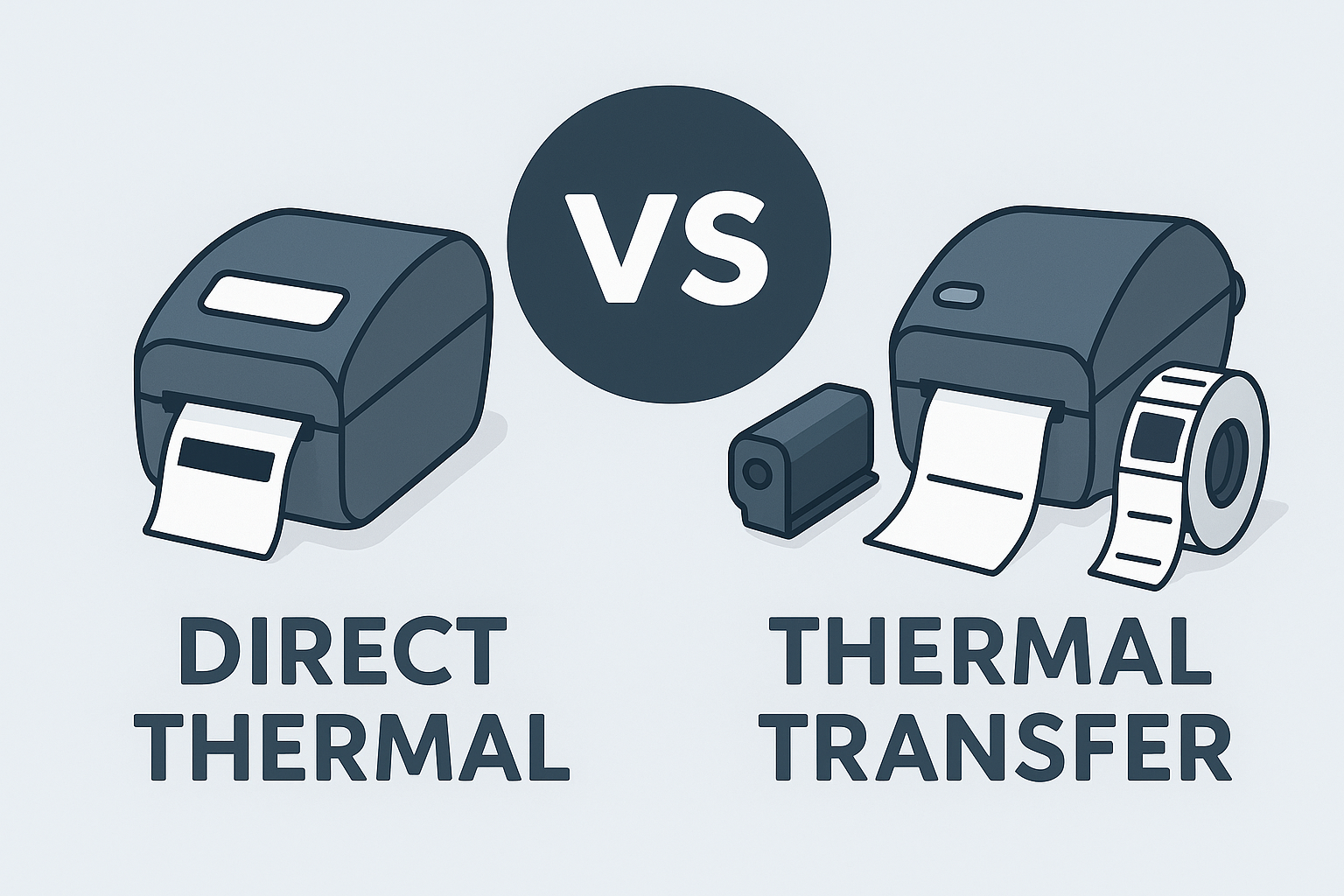When choosing a label printer, you’ll often come across two printing technologies: direct thermal and thermal transfer. Both use heat, but they work very differently. The choice affects durability, print quality, and label costs.
How it works
- Direct thermal: uses heat-sensitive paper that turns black when heated. No ribbon or ink is needed, making it low-maintenance and affordable.
- Thermal transfer: uses a ribbon that melts ink onto the label surface. This allows printing on paper and synthetic materials for long-lasting, scratch-resistant results.
When to choose which
| Application | Direct thermal | Thermal transfer |
|---|---|---|
| Shipping labels, receipts | ✅ Fast and affordable | ✘ Not necessary |
| Warehouse or product labels | ⚠️ May fade faster | ✅ Durable and long-lasting |
| Outdoor or hot environments | ✘ Heat sensitive | ✅ UV and heat resistant |
| Short-term use | ✅ Perfect choice | ✘ Overkill |
Example printers
- Direct thermal: Dymo LabelWriter, Brother QL series, Zebra ZD421D
- Thermal transfer: Zebra ZT231, ZD421T, TSC TX series
Common mistakes
- Using the wrong label type – paper fades quickly outdoors.
- Forgetting that direct thermal is heat-sensitive – labels blacken in sunlight.
- Running a transfer printer without a ribbon – it won’t print.
- Looking only at the purchase price – cheap printers can have higher running costs.
Conclusion
Choose direct thermal for shipping or short-term labels. Choose thermal transfer for long-lasting or outdoor labels. Always test before ordering in bulk.
 Deutsch (AT)
Deutsch (AT) Nederlands (BE)
Nederlands (BE) Deutsch (DE)
Deutsch (DE) English
English Nederlands (NL)
Nederlands (NL)










